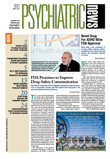The U.S. Food and Drug Administration (FDA) issued a final guidance last month that describes how the federal agency will communicate emerging drug-safety information to the public.
Important drug-safety information, an FDA press release noted, “has the potential to alter the benefit/risk analysis for a drug in a way that can affect decisions about prescribing or taking the drug.” In the guidance, the agency confirms its commitment to communicate important drug-safety information in a timely manner, including in some situations in which the FDA may still be evaluating whether to take regulatory action regarding a drug.
The guidance comes after several years of controversy over the agency's handling of safety information for drugs already on the market, as well as those being reviewed for approval. Over the past three years, the FDA has been accused by advocacy groups, professional associations, and senators and witnesses during Senate hearings of with-holding emerging safety information. The agency has been taken to task for its handling of emerging data on links between antidepressants and suicidality and on nonsteroidal anti-inflammatory medications and cardiovascular adverse events, among others.
The information in the guidance, “Drug Safety Information—FDA's Communication to the Public,” is aimed not only at making important emerging information on drug safety available to the public, but also at facilitating access by patients and clinicians to the most current information concerning the potential risks and benefits of a marketed drug.
“The guidance provides for timely communication of drug-safety information, which has been, and continues to be, an extremely high priority for the FDA,” said Steven Galson M.D., director of the FDA's Center for Drug Evaluation and Research, in a written statement. “Our goal is to make emerging drug-safety information available in a balanced, impartial manner so that health care professionals and patients can consider the information when making decisions about medical treatments despite uncertainties in the data.”
The guidance describes the methods that the FDA uses to communicate both established and emerging drug-safet y information to the public. In addition to product labeling, its methods of communicating important drug-safety information include the following:
•
Public health advisories: These provide information and advice regarding an emerging drug-safety issue or other important public-health information.
•
Patient information sheets: These provide concise summaries, in plain language, with the most important information about a particular drug.
•
Health care professional sheets: These summarize important and often emerging drug-safety issues, with information about the detection of the issues and points to consider in clinical decision making.
•
Alerts on patient information and health professional sheets. These summarize important and often emerging drug-safety issues. Topics may include newly observed serious adverse events that may be associated with a drug; information about how such adverse events might be prevented by appropriate patient selection, monitoring of patients, or use or avoidance of the therapy; and serious adverse events that the FDA believes may be associated with use of a drug in populations in whom the drug was not previously studied.
The guidance also describes the role of the Drug Safety Oversight Board in advising the director of the Center for Drug Evaluation and Research on the management of and communication about emerging drug-safety issues.
The FDA's risk-communication efforts are part of a larger drug-safety initiative that began in November 2004. In connection with its drug-safety initiative, the agency published a draft guidance in May 2005 that described a proposal to establish a new communication channel called the “Drug Watch” Web page to provide information to the public on emerging drug-safety issues. The FDA reviewed dozens of comments submitted by the public about the proposed Drug Watch site and considered comments received during a public hearing in December 2005 regarding risk-communication tools used by the FDA.
One issue raised during that hearing was the potential for confusion between the proposed Drug Watch and the FDA's long-standing MedWatch program, which issues alerts to clinicians and the public regarding new information about medical products. As a result, the agency dropped the Drug Watch name and will retitle that program in the near future.
“Drug Safety Information—FDA's Communication to the Public” is posted at<www.fda.gov/cder/guidance/7477fnl.pdf>. FDA communications regarding safety of specific medications are posted at<www.fda.gov/cder/drug/DrugSafety/DrugIndex.htm>.▪
